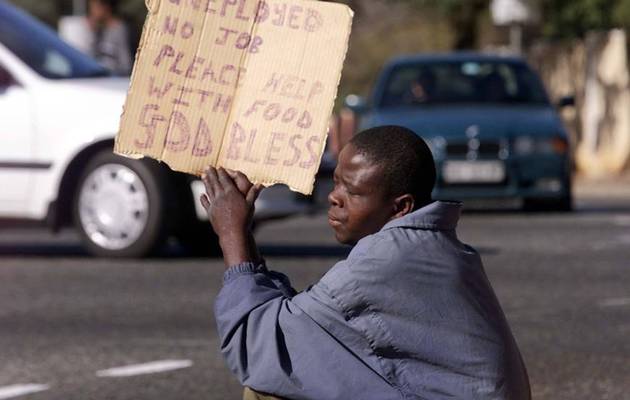
Eish, South African Unemployment Rate Rises to 14 Year High of 27.7%
South Africa’s unemployment rate rose to a 14 year high of 27.7 % in the first quarter of 2017, said Statistics South Africa on Thursday. “What we see is the highest [unemployment] since September 2003,” Statistician General Pali Lehohla said at the release of the Quarterly Labour Force Survey (QLFS) on Thursday. The Democratic Alliance […]

South Africa’s unemployment rate rose to a 14 year high of 27.7 % in the first quarter of 2017, said Statistics South Africa on Thursday.

“What we see is the highest [unemployment] since September 2003,” Statistician General Pali Lehohla said at the release of the Quarterly Labour Force Survey (QLFS) on Thursday.
The Democratic Alliance (DA) said the rise in unemployment is a “damning indictment of how the ANC has prioritised the looting of our country over the creation of jobs” and blamed the loss of jobs on the state capture by the “ANC-Gupta cabal”… saying “the ANC’s jobs bloodbath is continuing”…
The QLFS showed that the growth in employment by 144,000 was offset by the growth in the number of job seekers by 433,000, driving the unemployment rate to 27.7%.
According to the survey, on a quarter to quarter basis, the official unemployment rate increased by 1.2%, showing that 6.2 million people were unemployed in the first quarter.
Of the 433,000 that were unemployed, 58% were young people aged 15 to 34. This increased the youth unemployment rate by 1.6% to 38.6%.
“Once this group is unemployed for a period of time, [it] gets harder and harder for them to get jobs,” said Lehohla.
When looking at market rates by education level, the unemployment rate for those with less than matric was at 33.1%, up from 31.2% in the fourth quarter of 2016. The unemployment rate for graduates went up from 7% in the fourth quarter of 2016 to 7.3% in the first quarter of 2017.
Lehohla said the labour participation rate of graduates is higher because the likelihood of them getting jobs is higher and they continue searching for work.
Meanwhile, the increase in unemployment rate was recorded in seven of South Africa’s nine provinces. The highest increase was recorded in the Eastern Cape at 3.8%.
Employment
The QLFS, which is a household based sample survey, showed that a total 16.2 million people aged 15 to 64 were employed in the first quarter of 2017.
Formal sector jobs increased by 181,000 people quarter-on-quarter to 11.3 million.
The largest employment gains were recorded in manufacturing and finance.
There was some good news – employment in mining grew for the first time in the first quarter after declining for four successive quarters…
Sources: SAnews.gov.za, DA.org.za
